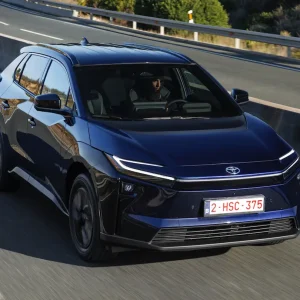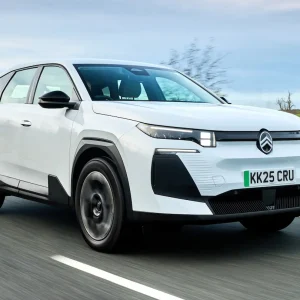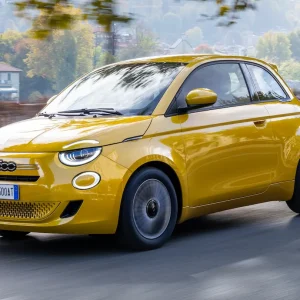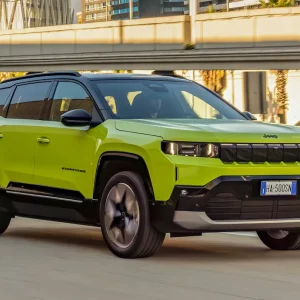
Polestar, the Swedish EV manufacturer that burst on to the UK market in 2020, has come of age. Having managed with one model, the popular and well-regarded Polestar 2, the range has grown to three models. The 3, it’s largest SUV (which we’ve also driven and will review separately), and this, the 4, which is up against the recently released Audi Q6 E-Tron, and the incoming Porsche Macan EV.
Outside, where the Polestar 2 relied on Volvo hand-me-downs for its handsome looks, the 3 and this 4 have given Polestar the chance to introduce a new family look. Highlights include the large split lights, short overhangs, unusual wing mirrors, and distinctive lower cut out down the flanks.
Most interesting and controversial part of the design is the lack of a rear window! The result of designer Max Missoni wanting a coupe roofline, but at the same time needing decent rear headroom. To do this, the header rail has been moved back behind the rear passengers’ heads. From the outside, the Polestar 4 doesn’t look too odd, thanks to the large panoramic glass roof.
Interior space
Move inside and, thanks again to the panoramic roof, that rear window isn’t missed. Add in the clever relaxed rear seating position, and despite the curvy roof, unless you’re carrying unusually tall rear passengers, their heads won’t be touching the ceiling. In fact, with its 2,999mm wheelbase and 4.84m overall length, rear legroom isn’t an issue either.
Polestar might be distancing itself from Volvo, but the brands share the same non-conformist, but high-quality feel – thanks to carefully chosen colours and trims.
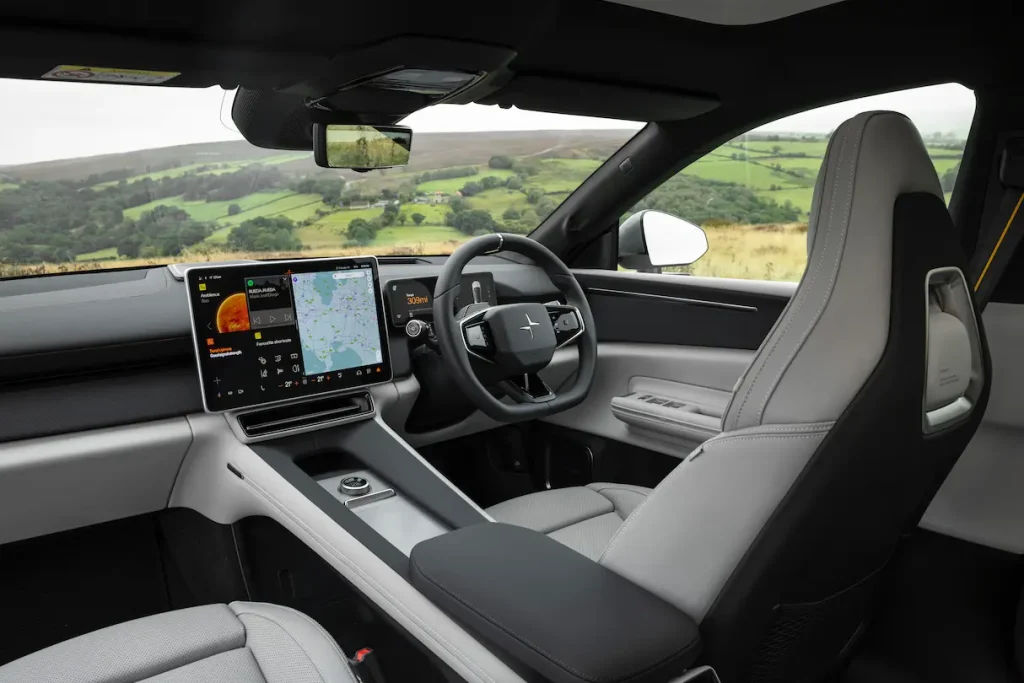
In the front, there are comfortable, one-piece sports seats that grip you well. The three-spoke multifunction steering wheel is hard to initially operate thanks to its lack of lettering – but it’s good to hold. The column stalks are also new, but borrowed from the Volvo EX30, with a thin portrait screen in front of the driver.
The Polestar 4’s infotainment is more unusual, as unlike the previous slim, vertical screen, this new car’s large 15.4in horizontal screen works well enough – although it’s more complicated to operate.
Performance and drive
Built on Geeley’s SEA platform that’s shared with other models, including the Volvo EX30. In the Polestar 4’s case, there’s a 100kWh battery pack, 400-volt architecture, and it can be fast charged up to 200kW. First, there is the Long Range Single Motor version, with 268hp, 253lb ft of torque, acceleration to 62mph in 7.1 seconds, and most importantly an official range of 379 miles. The other model we drove is the Long Range Dual Motor, which as the name suggests has a second motor, and a power hike to 536bhp, with the 0-62mph acceleration dropping to just 3.8 seconds, and the range reduced to 360 miles.
On the road, the lack of a rear-view mirror only felt odd at the start of our drive. The 4, like various JLR products before it, uses a digital rear-view mirror, which initially seems strange – but becomes so normal, you don’t think twice very quickly. Although in general, distances are harder to judge than if it was a standard mirror.
Next up is the steering, which has good weight and is responsive – even if it lacks some feel. Our car was fitted with 21in wheels with no special suspension – it felt stiff, yet it still strikes a good balance between comfort and dynamism. With over 500bhp it’s plenty quick enough, too. Although at UK limits, in the mid setting, the 4 feels precise, and naturall enough to have fun – especially on country roads.
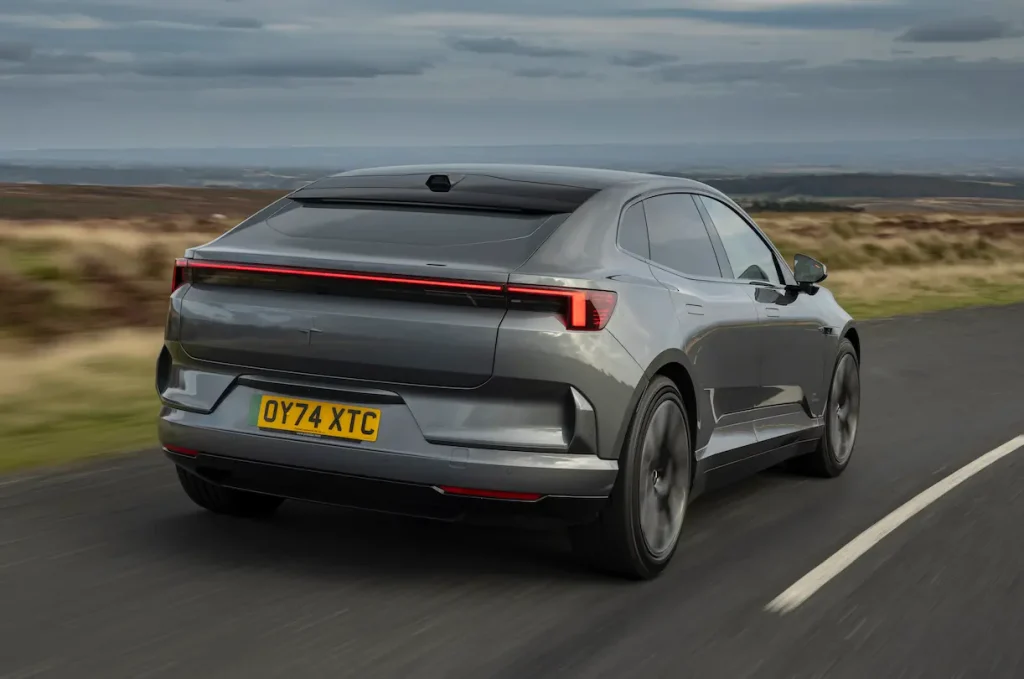
We look forward to driving the single-motor version, which we’re sure will be most suitable for fleets. However, the performance range-topper is an impressive start with its attractive, individual exterior and interior styling – plus the fact it’s good to drive.
Positive: Unusual and attractive exterior and interior design, interior space, keen performance, a good drive
Negative: Expensive, some interior issues, small boot
Engines: Electric: 268hp, 536hp
Equipment grades: Long Range Single Motor, Long Range Dual Motor
Transmission: Single-speed automatic
| Model | Polestar 4 Long Range Dual Motor 400kW 100kWh |
| P11D | £72,235 |
| Residual value | 46% |
| Depreciation | £38,515 |
| Fuel | £4,558 |
| Service, maintenance and repair | £4,015 |
| Cost per mile | 78.48p |
| Range | 360 miles |
| CO2 (BIK%) | 0g/km (2%) |
| BIK 20/40% a month | £24/£48 |
| Luggage capacity | 526 litres |
| Battery size/power | 100kWh/751hp |
| Score | 8/10 |

